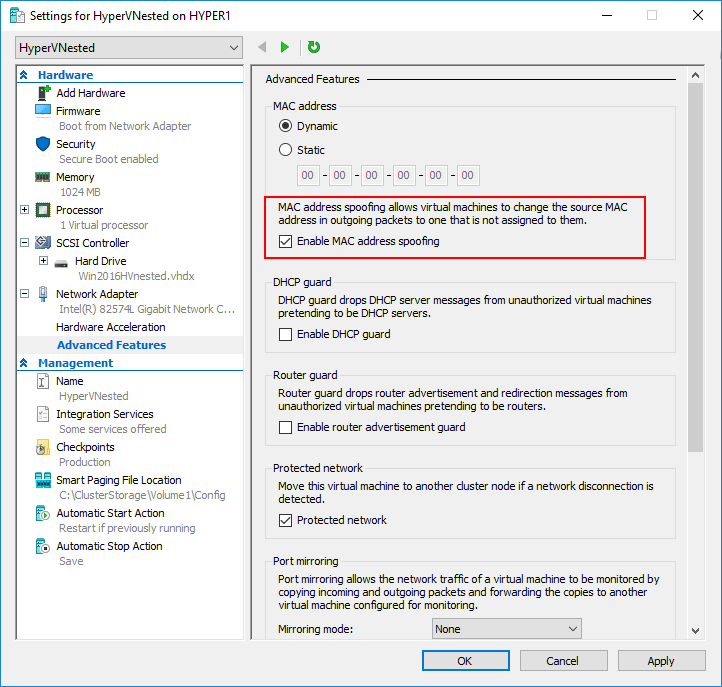
Hyper V For Mac Os
In this post I'll be installing Hyper-V server on my Dell T710 as a single-stand-alone machine, while configuring it solely from a MacOS based. Hyper-V 2012 on a Mac Mini I recently got a lab setup for home to test configuration changes before deploying them on the production network and decided to take the opportunity to demo the new Windows Server 2012 as the backend to the whole thing.
Virtualization plays a major role in many businesses, though this may not always be immediately apparent to Mac users. Increasingly, the applications they work with will not be running on tangible hardware but rather on virtualized systems. Software developers can also make good use of such virtual machines (VMs).
Microsoft has long embraced this virtualization technology and offers Microsoft Hyper-V as a virtualization environment for a range of their more recent Windows and Windows Server operating systems, as well as a standalone product. However, Hyper-V’s hosting capabilities aren’t restricted to virtualized operating systems such as additional Windows environments or Linux distributions. IT teams can use Hyper-V to consolidate virtualized hardware—for instance, servers as private clouds. Applications such as Remote Desktop are in part based on Hyper-V as well.
Hyper-V is not for macOS
However, macOS® offers no support for Hyper-V and hosted systems that could rely on it. Organizations that use Mac® computers alongside Hyper-V virtual machines have no option other than to take advantage of Parallels Desktop™ for Mac Business Edition. It is the perfect solution as it comes with support for Hyper-V virtualization.
Both administrators and users can activate Hyper-V in Parallels Desktop Business Edition. The corresponding option can be found as a checkbox under “CPU & RAM” labeled as “Enable nested virtualization.” This will allow a Parallels Desktop Business Edition virtual machine to execute its own virtualization, such as Hyper-V. As a result, organizations can make Hyper-V applications available to Mac users as well.
Learn more about using Hyper-V in Parallels Desktop Business Edition and download a free trial.
Learn more:
Microsoft Docs Hyper-V Technology Overview
Microsoft Supported Linux and FreeBSD virtual machines for Hyper-V on Windows
Download zero-g nostalgia vsti dxi rtas au for mac download. Parallels Knowledge Base Nested Hyper-V support
We’re excited to announce that a Hyper-V virtual machine with Parallels® Mac Management for Microsoft® SCCM is now available—a pre-built Microsoft SCCM trial environment with a trial version of our plugin for managing Mac computers.
This pre-built trial allows you to try our solution without any impact on your Microsoft SCCM infrastructure. It also enables you to control and manage Mac computers right away after activation.

You can run this Windows Server 2012 R2 virtual machine on a physical server with Hyper-V, or even on a compatible Windows 10 workstation with the Hyper-V role enabled.
What’s inside this virtual machine:
- Windows Server 2012 R2
- Active Directory, DNS, and DHCP
- SCCM current branch 1702, including MSSQL server
- Parallels Mac Management for Microsoft SCCM Version 6, installed and preconfigured to work with SCCM
After downloading and extracting the VM hard disk image, you will need to create a new Hyper-V virtual machine in Hyper-V manager (or attach this hard disk image to an existing one). You will then need to add some finishing touches to the Guest OS Windows 2012 Server R2 to be able to activate your trial license for Parallels Mac Management, as described in the trial-in-a-box guide.
This virtual machine is great for testing out almost all the features of Parallels Mac Management. You will only need a single macOS® endpoint device to start with, and a few more if you want to manage macOS device collections the way you want.
Which trial option to choose? Trial-in-a-box virtual machine is perfect for a quick hands-on experience that also keeps your Microsoft SCCM installation intact.
If you want to try macOS Operating System Deployment and support for the Apple Device Enrollment Program, then the on-premise fully featured trial would be the best option.
Given the minimum learning curve and no additional infrastructure required, our solution leverages your Microsoft SCCM investments and enables Windows admins to manage Mac computers. Making a lubuntu bootable usb for mac.